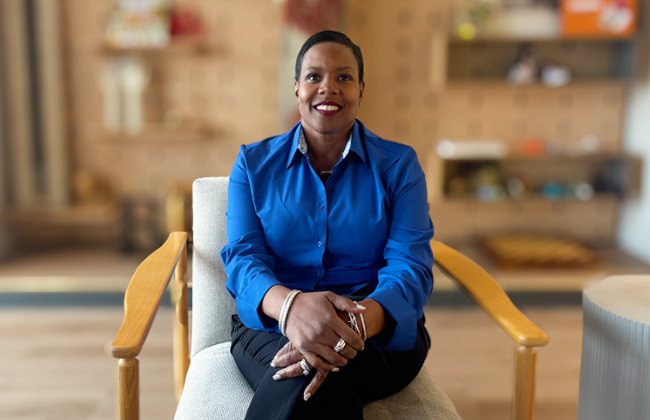Building Youth-Led Systems for Community Engagement
Lessons Learned at the First Anniversary of the Center for Rising Generations.
Last August, the Aspen Institute launched the Center for Rising Generations (CRG) with a clear, ambitious vision: equip young people to lead change in their communities, their country, and the world.

“In just one year, CRG has gone from an idea to a force,” said Executive Director, Kaya Henderson. “We’ve proven what happens when you bet on young people: they deliver big, they lead boldly, and they remind us that the future is here.”
One year later, CRG has done more than lay a foundation - it has sparked bold ideas, unexpected insights, and built bridges across generations. And year two? It’s already scaling, with expanded programs designed to reach more young people and ignite more civic engagement and dialogue.
This work is intentional, and powered by partnership. Executive Director Kaya Henderson reminds us: “CRG’s long-term success depends on shared investment. We’re building models that can last.”
CRG is not just delivering programs. It’s creating an ecosystem, convening, connecting, and amplifying the full circle around young leaders: parents, teachers, mentors, and community partners. Because when young people thrive, whole communities rise.
The demand is undeniable. When CRG launched the first Rising Generations Summit this summer, over 800 young people from 42 states applied in just a few months. That’s proof: young people are ready, and hungry, to lead. Or take Airplane Mode, CRG’s pilot series designed to bring young people back into “third spaces” and the places where real community comes alive. Within just two weeks, almost 250 young people RSVP’d for the first event. The message couldn’t be clearer: this generation is eager to reconnect face-to-face, to build belonging, and to spark conversation about what it means to create community in real life.
One Year, Three Big Lessons
Reflecting on CRG’s first year during a visit to the BFF offices, Henderson shared three early lessons that stand out:
Young people are ready. Henderson has seen it firsthand: everywhere, students are saying “let’s go!” They don’t need convincing. Young people need tools, connections, and trust.
Collaboration across generations is essential. Young people aren’t asking for the keys to be handed over. They’re asking to learn, to partner, to build with the wisdom of older generations.
Parents are unexpected allies. What began as a logistical necessity at the Rising Generations Summit turned into a breakthrough: parents stayed, participated in programming, and became active partners in supporting their children’s civic journeys.
Looking Ahead
CRG is measuring impact by transformation, not headcounts. The big questions drive the Center: How do young people see themselves differently after engaging with CRG? What ripple effects happen in their schools, families, and communities?
Year two will answer these questions, through projects, research, and partnerships with groups like Gallup and others. Already, students are leading on issues from climate change to AI in civic life, showing the creativity and urgency this moment demands.
“Leadership isn’t about titles,” Henderson reflected. “It’s about unleashing the power young people already carry, for themselves, their communities, and the world.
One year in, CRG has proven this: when young people are equipped with tools, networks, and support, they don’t wait to lead.
BFF is proud to support the Center for Rising Generations. Learn more.